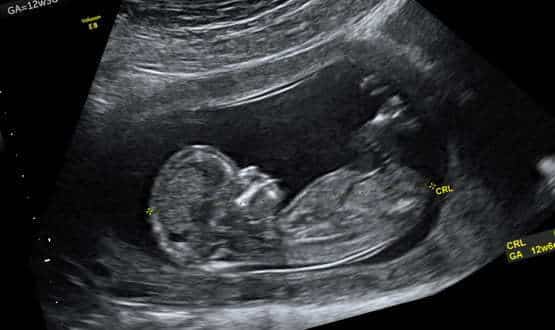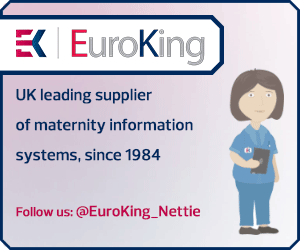
Special Report: Maternity

Maternity Report
Baroness Cumberlege’s latest review of maternity services made several important recommendations on IT systems. Suppliers and trusts are optimistic that this will prove a turning point for the widespread adoption of modern, maternity information systems; helping women and babies. Kim Thomas reports.
The National Maternity Review, published last month, may prove to be a turning point in adoption of maternity IT systems.
The review by Baroness Cumberlege – prompted by the Kirkup report’s damning investigation into the deaths of babies at the Morecambe Bay NHS Foundation Trust – puts the safety of mother and baby at the centre of its recommendations.
These include better working across professional boundaries (particularly between midwives and obstetricians); collection of data on outcomes so that maternity teams can measure performance; and a national standardised process for investigating when things have gone wrong.
The review makes it clear that better collaboration and data sharing must be underpinned by the roll-out of an electronic maternity record, and says that women should be able to see their record and enter relevant information.
Recommendations such as the creation of multi-professional peer review of services, the introduction of geographically-based clinical networks and the use of outcomes-based commissioning cannot be implemented without appropriate IT.
A turning point?
All this should be good news for IT suppliers working in the sector. Chris Yeowart, managing director of EuroKing, hopes that the review will be a “tipping point” in adoption.
While he has seen enthusiasm among midwives for the modernisation of maternity systems, take-up has so far been slow.
Although 20% of funding for maternity services is spent on clinical negligence cover, it comes from a central budget. So there is little incentive, he notes, for cash-strapped financial directors to invest in safety-focused solutions.
But this will have to change. The traditional paper-based record, carried by the mother, is a barrier to collaboration.
Louise Caney, maternity and nursing product manager at System C, says: “If you’ve just seen a woman who’s a complex case, and you would like a second opinion, you have to take the paper notes away from the clinical area to find that person, because they might be in theatre or in clinic.”
All those notes…
Even so, the transition to an electronic record – which must be available both to practitioners in the hospital and midwives working in the community – can be more challenging in maternity than in other specialisms in the NHS.
In Maidstone and Tunbridge Wells NHS Trust, community midwives use tablet computers to input the mother’s data into Euroking’s E3 electronic record. They are able to work offline, and reconnect to E3 when a signal becomes available.
Another tricky question for trusts is what happens to the paper record. Midwives at Maidstone and Tunbridge Wells are, for the time being, continuing to handwrite in the mother’s paper record as well as enter data into the electronic record.
When Colchester Hospital University NHS Trust implemented System C’s Medway Maternity system, it initially printed copies of the electronic record at every appointment.
Fiona Binnie, IT specialist midwife at Colchester, describes this as “so paper-heavy it got a bit ridiculous”, so the trust asked women whether they would mind not having notes, and the vast majority said they wouldn’t.
It’s a dilemma that will disappear in time, as suppliers work on providing portals that will allow patient access to the electronic record.
Integration the next challenge
While an electronic record system offers benefits in itself, in particular the ability of all relevant health professionals to have access to patient data, much greater benefits accrue when it is integrated with other systems.
Lorraine Edwards, who heads Cerner’s maternity IT team, notes that if a pregnant woman presents to A&E, for example, integration with the main electronic patient record enables clinicians instantly to see relevant information about her pregnancy alongside other medical data.
Other opportunities for integration will support the multi-professional collaboration recommended by Cumberlege.
One of the most significant is integration with electronic CTG systems enables an obstetrician to view a labouring woman’s cardiotocography trace remotely, allowing quick access to an expert second opinion, and the ability to archive the trace in the record.
Given that much litigation in maternity hinges on whether the CTG has been read correctly, this could transform outcomes as well as reduce insurance costs.
Do it once…
There are also efficiency benefits to be derived when data no longer has to be entered twice. Integration with the “red book”, for example, which is also likely to be digitised, will allow data recorded at birth to flow seamlessly into the child health record.
In Tunbridge Wells and Maidstone, E3 is integrated with the BadgerNet neonatal system. Susan Powley, maternity IT change manager, says: “Previously when a baby was admitted the nurse or the doctor would have to input all the data about the baby, including all the mother’s demographic details and all the delivery details.
“Now we have set up this interface so that all the demographics and some of the birth details and mother’s history populates BadgerNet automatically.”
E3 is also integrated with Viewpoint, the maternity ultrasound system, says Powley, enabling a pdf of the ultrasound report to be downloaded to the maternity record, so that the due date is accurately recorded.
The ability to automate referrals provides clear efficiency benefits (at Tunbridge Wells and Maidstone, one click at the booking-in appointment can refer the woman to a scan or consultant clinic), but it also offers an opportunity to improve patient outcomes.
Take smoking, which the Maternity Review describes as the “single biggest modifiable risk factor for poor birth outcomes and a major cause of inequality in child and maternal health outcomes”.
If a midwife records data about smoking status, Yeowart notes, then an automatic referral can be made to a smoking cessation clinic.
Using the data
If Cumberlege’s goal of achieving safer outcomes for women and their babies is to be achieved, data will need to take centre stage.
The introduction of the maternity services data set has paved the way for this – maternity units with electronic data collection systems in place are now collating data and sending it to the Health and Social Care Information Centre to support payment for maternity services.
Some trusts are already starting to use business intelligence reporting to identify areas of concern.
“Most of our hospitals can look at the data and see if there are any trends going on, enabling them to intervene,” says Edwards, offering as an example of ability to analyse the reasons for the number of postpartum haemorrhages in a given time period.
Caney notes some of the ways in which analysis of data can improve performance: “You can run a report on, for example, how many women are returning to theatre after delivery to have retained placental tissue removed.
“If that’s unacceptably high, you can revisit and it might be that midwives and clinicians aren’t checking the placentas properly.
“Or it could be that there are lots of perineal infections following suturing, so you can look at the technique and the suture material – the results will tell you very honestly what’s going on.”
While this is immensely useful at a local level, it could prove even more valuable when collated at a national level, enabling the NHS to identify both failures in care and the reasons for them. As Yeowart points out, there is “a real mass of intelligence in there waiting to be tapped into.”
After years of neglect, could it be that the Maternity Review will finally bring maternity services out of the technological wilderness? Caney is optimistic: “I don’t know if by 2020 there’ll be many – if any – trusts without a maternity IT system.”

